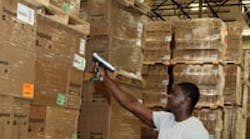Clear and reliable bar code label printing is essential to international shipping operations for WorldKitchen LLC (www.worldkitchen.com). That’s why this kitchenware maker made it a priority in serving global markets. This company manufactures and markets a wide range of kitchenware brands including CorningWare, Pyrex, Corelle, Snapware and Chicago Cutlery. For World Kitchen, having accurate data is critical to efficient inventory management and supply chain operations because these data are encoded onto its bar code labels.
Each year, the company produces millions of 4”x 6” and 4” x 8” bar code shipping labels that contain customers’ parcel information, including shipping addresses and purchase order numbers. Having unreadable bar codes in World Kitchen’s supply chain results in operational inefficiency and higher operational costs due to refused shipments, costly reshipments and chargebacks.
Customer-imposed compliance fines (chargebacks) due to poor bar code scannability also became a costly issue for World Kitchen. The company was paying thousands of dollars a month in compliance fees. These unscannable bar codes delayed deliveries to department stores, mass merchants and other customers around the world. Manually tracing, isolating and fixing the source printer that produced the unscannable label was costly and labor-intensive.
100 Percent Bar code Accuracy
Compliance fines and the resolve to end inefficiency throughout shipping operations prompted the need for new thermal printers (Printronix, www.Printronix.com) that could produce 100 percent machine readable bar code labels. This investment helped World Kitchen eliminate the problem and save the company thousands of dollars a year in compliance fines alone for each of the six years they have been in use.
The printer software analyzes incoming data to identify bar code commands for every label. After printing, the bar code image is scanned and tested against the symbology specifications. If an unscannable or poor quality bar code is detected, the label is automatically cancelled and a replacement label is printed. This also eliminates the need to do manual verification.
When online data verification catches a bad bar code, the printer overstrikes the label immediately in the supply chain process and automatically reprints a good label.
Before adopting the thermal printers, World Kitchen used continuous feed laser printers. Maintaining and repairing these was laborious and difficult. In comparison the staff now simply loads media and performs routine maintenance, like changing print heads. With attention to such details such printers can last seven to ten years.



